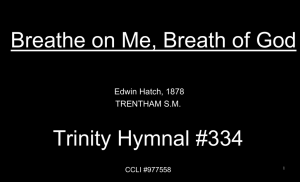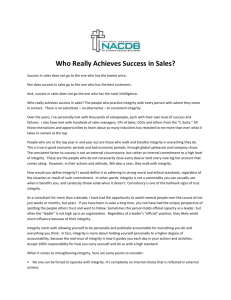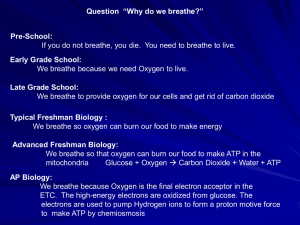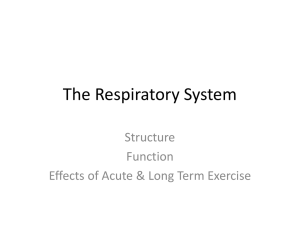Dog technique
advertisement
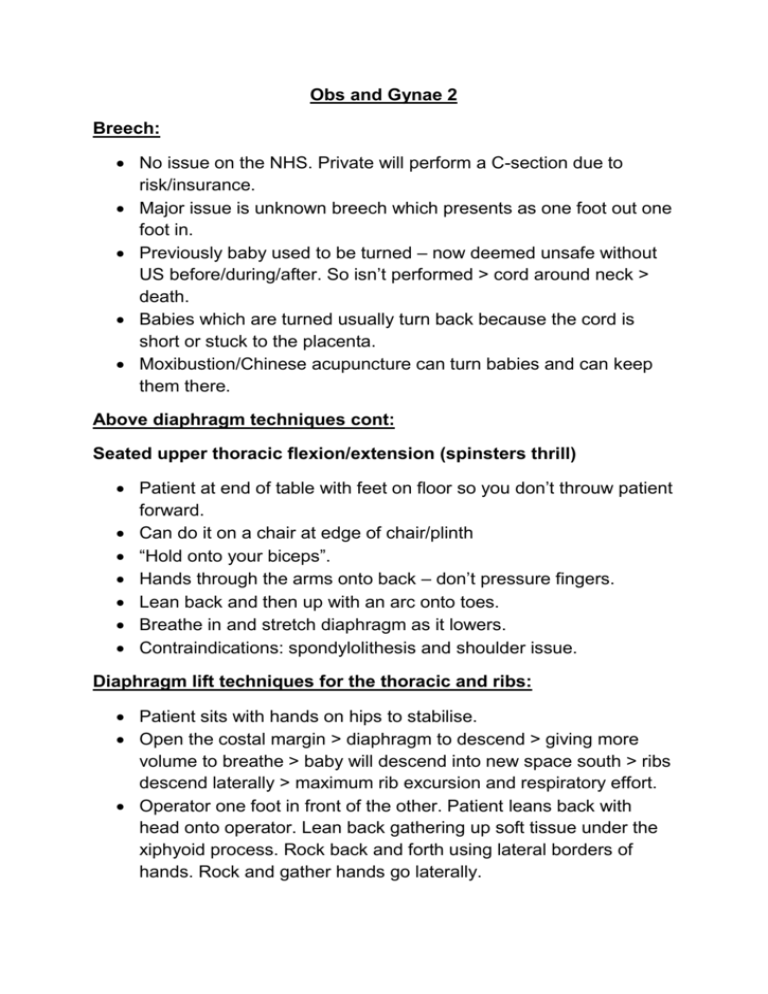
Obs and Gynae 2 Breech: No issue on the NHS. Private will perform a C-section due to risk/insurance. Major issue is unknown breech which presents as one foot out one foot in. Previously baby used to be turned – now deemed unsafe without US before/during/after. So isn’t performed > cord around neck > death. Babies which are turned usually turn back because the cord is short or stuck to the placenta. Moxibustion/Chinese acupuncture can turn babies and can keep them there. Above diaphragm techniques cont: Seated upper thoracic flexion/extension (spinsters thrill) Patient at end of table with feet on floor so you don’t throuw patient forward. Can do it on a chair at edge of chair/plinth “Hold onto your biceps”. Hands through the arms onto back – don’t pressure fingers. Lean back and then up with an arc onto toes. Breathe in and stretch diaphragm as it lowers. Contraindications: spondylolithesis and shoulder issue. Diaphragm lift techniques for the thoracic and ribs: Patient sits with hands on hips to stabilise. Open the costal margin > diaphragm to descend > giving more volume to breathe > baby will descend into new space south > ribs descend laterally > maximum rib excursion and respiratory effort. Operator one foot in front of the other. Patient leans back with head onto operator. Lean back gathering up soft tissue under the xiphyoid process. Rock back and forth using lateral borders of hands. Rock and gather hands go laterally. Push patient forward roll her down with head forward by putting feet side by side. Breathe in with ulnar borders of hands into costal margins and go lateral and then patient extends. Hands now on lateral borders. Breathe out with hands on lateral border and support expiration by pushing down gently. Repeat the rock and gather > breathe in and breathe out. Contraindication: no consent, be careful of breast tissue, explain the technique, offer withdrawl. Myofascial release for the thorax and the mediastinum: Mediastinum is a space. Parietal pleural membranes are lateral borders, anterior is posterior sternum and posterior is the thoracic vertebrae. Mediastinum contents are the hearts, pericardium, great vessels (e.g. aorta), oesophagus, nerves (symps, phrenic, vagus n). Mediastinal technique for torsions through the pericardium, the serous membrane sac around the heart, allowing heart free movement. Pericardium has 3 layers: serous, fibrous and muscular. Pericardial attachments to sternum/diaphragm/vertebrae of thorax, CSp and base of occiput. Idea is to unwind the fascias through the pericardium. Do not have patient supine as it can impinge on inferior vena cava > BP drop > faint. Have patient SL on Left or sitting. Technique set up: Diaphragm hold on anterior sternum and posterior vertebra, hands both pointing towards opposite hip. Consent for technique due to closeness in breast tissue. Connect to the tissue. Be soft hand. Use body weight to create pressure – do not push. Be interested in the space between your hands. Both techniques listed work on MM, ligaments, bone, CT. Both are POE and BLT: one is follow, the other hold the tension. 1. FUNCTIONAL TECHNIQUE: 6 parameters of movement: up/down, AP, sideshift, SB, FLEX/EXT, ROT. Find balance between each vector. Wait. Breathe in. wait. Then follow as release unwinds passively. This is harder to achieve with a pregnant patient 2. Myofascial Technique: Stacking the vectors in 3D. Choose with is the most dominant vector eg EXT or FLEX > add all vectors. Wait for 90 seconds and hold that space. Each vector gets fatigued > warmth as blood rushes in and tensional release. Tissue might fight a little. Breathing issue and “stuck feeling” may occur > wait for release. HVLA Thrust techniques: Do not press on abdomen. Do not keep pregnant at EOR in wind up. All these techniques are at minimal lever at fast speed- short and crisp. Seated techniques are better for BP than supine and dog. Short lever and short impulse. Lift off is not lifting patient but lifting vertebrae off the other. Lift off seated Tspine: Lift off – V of arms. For top TSp have hands either side of neck, for lower Tsp have hands on the side of thorax. This creates a W. creates more focus. Can adapt the same thing for the Dog technique. Combination of levers into SB, flexion, reverse rotation, extension. As you approach extension you drive the force through the single elbow toward your chest as a pectoral squeeze. Get patient to go through the movement circles let them lean back and be floppy. Get speed. And when wound up thrust. Dog technique: Be careful of breast tissue and power through the abdomen. No different to seated technique – except gravity and fulcrum. Examine: get patient away from you a little more. Roll patient from shoulder and pelvis onto her side. Put elbow into her bottom. Now examine into each segment going back towards the table. Technique: release facet above by holding the facet below. Use of fist or flat palm. Better way is an open hand with the thumb gripping the SP to make a sulcus with slight wrist extension. Move the vertebrae below north and move the vertebrae above south with applicator. Put pillow to increase the tension around the fulcrum. Flex beyond the lesion. Grip vertebra below and hold. Hold position of arms with chest. Introduce SB and ROT through the shoulder. Thrust through the shoulder with no chest compression. Below the diaphragm Weight gain pregnancy –used as a guide by obstretrician and midwives as an indicator of health. No weight gain (anorexic/lack of nutrition) or too much (obese e.g. gestational diabetes from too much GH) is a concern. Diabetic mothers can have a 9/10 lbs baby. PCOS > ↑ androgens and ↑ oestrogen > masculine features. PCOS can lead to DM. Patient given metformin which desensitizes the tissue oestrogen receptors are desensitized) so the hyperandrogenaemia does not take place. Somatotrophin > parallel levels > not sure what was said. GH and androgenaemia. See Netter’s book on internal medicine. Fluid changes: Pregnant patient is Hyperhydrated > renal function changes and altered sensitivity of the control mechanisms. GFR ↑ 50%. Glomerulus: high pressure blood from the aorta to the renal artery > small arteriole > Knot of arterioles and then continue on their way. It is contained inside the cup with a filter which drips into the draining descending tubule > connecting duct > ascending tubule. The cup and knot is the glomerulus. The bit beside the glomerulus is the juxtaglomerulus which deals with the pressure going into the glomerulus. The same afferent arteriole and efferent arteriole wires around the tube before going to the renal vein. Small filtrate goes through the glomerulus > eg NA and CL etc into the tube > reabsorbed in the tubules. Urine dilution and concentration changes > into ureters > bladder. Glomerulus works to change the body’s water balance and the concentration of urine. Disease processes that effect the basement membrane of the glomerulus > oedema (SLE/collagen settling disease/rheumatoid disease). With large proteins in urine > basement membrane is damaged letting proteins through (pre-eclampsia). Urine – glycosuria can be present due to increased glucose in blood – not a sign of DM. Late stages of pregnancy > increased calcium absorption > parathyroid hormone regulation of calcium > blood calcium increases > filtrate of calcium > calculi in kidney > teeth and nails fall out. Reninangiotensin system stimulated > Aldosterone secretion in adrenal cortex is stimulated > ACTH from anterior pituitary secreted increases > 40% pituitary gland enlargement.

